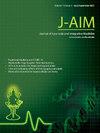Understanding Atherosclerotic Cardiovascular disease in the light of Ayurveda
IF 1.9
Q3 INTEGRATIVE & COMPLEMENTARY MEDICINE
引用次数: 0
Abstract
Atherosclerotic cardiovascular disease (ASCVD) is the malady that claims most human lives around the world by literally cutting off their heart's blood supply. Unwholesome diet, sedentary lifestyle and psychological stress are the major risk factors leading to this condition. Even with technological and medical advancements, the burden of this disease has only aggravated further especially with the COVID pandemic also contributing to trigger this condition. There is an urgent need to find better solutions to combat this disease in such circumstances. The Indian traditional healthcare system, Ayurveda has a unique perspective of the heart and heart disease which when understood parallelly along with modern medical knowledge may offer better solutions. The descriptions of Kaphaja Hridroga in Ayurveda can be correlated to ASCVD, and this article is an effort to develop a synergistic understanding of the aetio-pathogenesis of ASCVD in the light of Ayurveda. Ayurveda management principles give more emphasis on prevention and non-pharmacological approaches such as diet and lifestyle modifications along with medical management and these principles of management of Hridroga can be tactfully integrated into conventional therapy for providing a more wholesome care.
从阿育吠陀的角度理解动脉粥样硬化性心血管疾病。
动脉粥样硬化性心血管疾病(ASCVD)是一种夺走世界上大多数人生命的疾病,它实际上切断了他们的心脏血液供应。不健康的饮食、久坐不动的生活方式和心理压力是导致这种情况的主要风险因素。即使在技术和医学进步的情况下,这种疾病的负担只会进一步加重,特别是COVID大流行也会引发这种情况。在这种情况下,迫切需要找到更好的办法来防治这一疾病。印度传统医疗保健系统,阿育吠陀对心脏和心脏病有独特的看法,当与现代医学知识并行理解时,可能会提供更好的解决方案。阿育吠陀中Kaphaja Hridroga的描述可以与ASCVD相关联,本文旨在从阿育吠陀的角度对ASCVD的运动发病机制进行协同理解。阿育吠陀的管理原则更加强调预防和非药物方法,如饮食和生活方式的改变以及医疗管理,这些管理原则可以巧妙地融入传统治疗中,以提供更健康的护理。
本文章由计算机程序翻译,如有差异,请以英文原文为准。
求助全文
约1分钟内获得全文
求助全文
来源期刊

Journal of Ayurveda and Integrative Medicine
INTEGRATIVE & COMPLEMENTARY MEDICINE-
CiteScore
4.70
自引率
12.50%
发文量
136
审稿时长
30 weeks
 求助内容:
求助内容: 应助结果提醒方式:
应助结果提醒方式:


